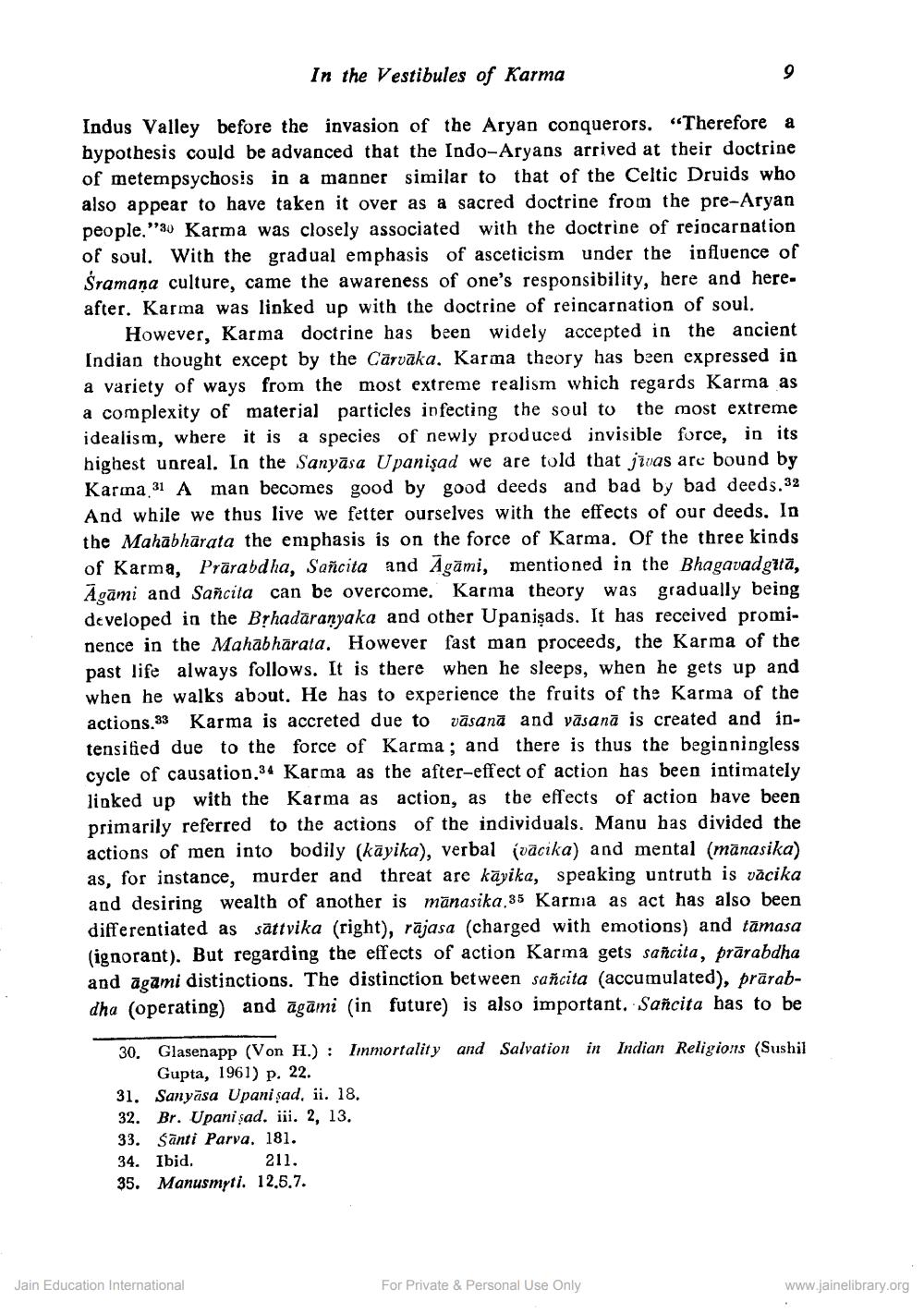________________
In the Vestibules of Karma
Indus Valley before the invasion of the Aryan conquerors. “Therefore a hypothesis could be advanced that the Indo-Aryans arrived at their doctrine of metempsychosis in a manner similar to that of the Celtic Druids who also appear to have taken it over as a sacred doctrine from the pre-Aryan people,"30 Karma was closely associated with the doctrine of rejocarnation of soul. With the gradual emphasis of asceticism under the influence of Šramana culture, came the awareness of one's responsibility, here and here. after. Karma was linked up with the doctrine of reincarnation of soul.
However, Karma doctrine has been widely accepted in the ancient Indian thought except by the Cārvāka, Karma theory has been expressed in a variety of ways from the most extreme realism which regards Karma as a complexity of material particles infecting the soul to the most extreme idealism, where it is a species of newly produced invisible force, in its highest unreal. In the Sanyāsa Upanişad we are told that jīvas are bound by Karma 31 A man becomes good by good deeds and bad by bad deeds. 32 And while we thus live we fetter ourselves with the effects of our deeds. In the Mahābhārata the emphasis is on the force of Karma. Of the three kinds of Karma, Prārabdha, Sañcita and Agāmi, mentioned in the Bhagavadguta, Agāmi and Sañcita can be overcome. Karma theory was gradually being developed in the BỊhadaranyaka and other Upanişads. It has received prominence in the Mahabharata. However fast man proceeds, the Karma of the past life always follows. It is there when he sleeps, when he gets up and when he walks about. He has to experience the fruits of the Karma of the actions.33 Karma is accreted due to vāsanā and yāsanā is created and intensified due to the force of Karma; and there is thus the beginningless cycle of causation.34 Karma as the after-effect of action has been intimately linked up with the Karma as action, as the effects of action have been primarily referred to the actions of the individuals. Manu has divided the actions of men into bodily (kāyika), verbal (vācika) and mental (mānasika) as, for instance, murder and threat are kāyika, speaking untruth is vācika and desiring wealth of another is mānasika.35 Karnia as act has also been differentiated as sättvika (right), rājasa (charged with emotions) and tamasa (ignorant). But regarding the effects of action Karma gets sancita, prārabdha and agami distinctions. The distinction between sancita (accumulated), prārabdha (operating) and āgāmi (in future) is also important. Sañcita has to be
Indian Religions (Sushil
30. Glasenapp (Von H.): Immortality and Salvation in
Gupta, 1961) p. 22. 31. Sanyāsa Upani şad, ii. 18. 32. Br. Upani şad. iii. 2, 13. 33. Santi Parva. 181. 34. Ibid. 211. 35. Manusmyti. 12.5.7.
Jain Education International
For Private & Personal Use Only
www.jainelibrary.org




